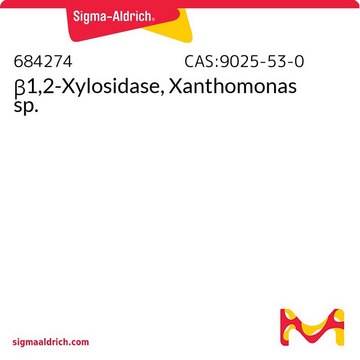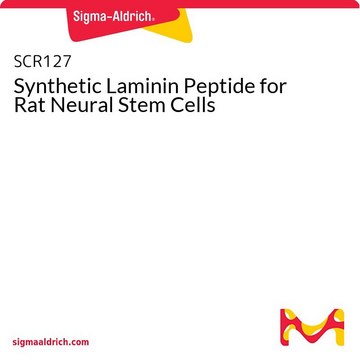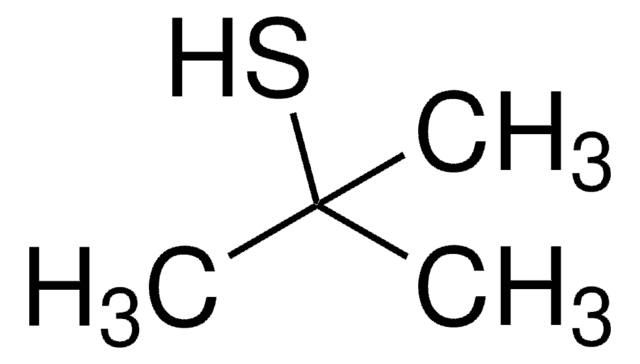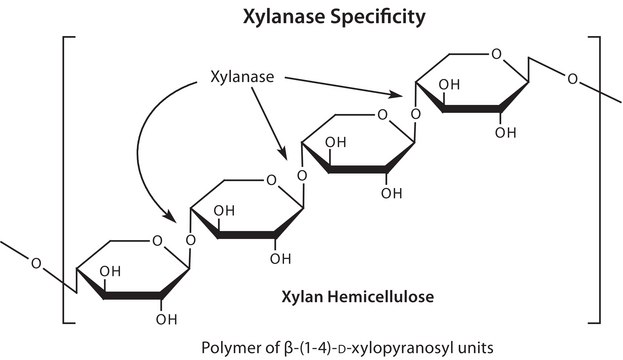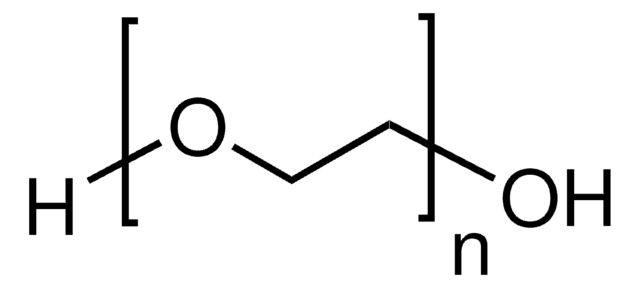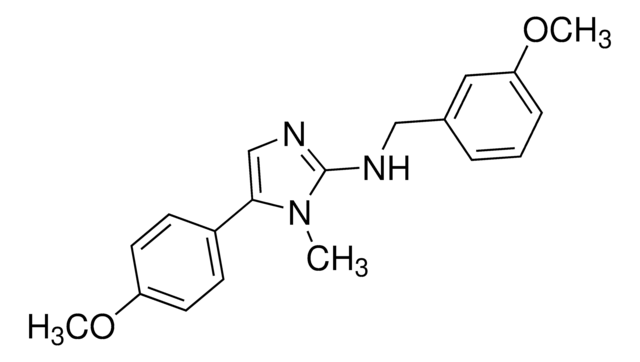X3504
β-Xylosidase, thermostable
recombinant, expressed in E. coli, ≥90% (SDS-PAGE)
Sign Into View Organizational & Contract Pricing
All Photos(1)
About This Item
CAS Number:
UNSPSC Code:
12352204
Recommended Products
recombinant
expressed in E. coli
Quality Level
Assay
≥90% (SDS-PAGE)
form
liquid
specific activity
≥35 units/mg protein
mol wt
81 kDa
concentration
≥20 mg protein/mL (UV)
shipped in
wet ice
storage temp.
2-8°C
Biochem/physiol Actions
Releases reducing sugars from birchwood xylan ( X0502), also catalyzes the hydrolysis of 4-methylumbelliferyl-β-D-cellobioside and 4-methylumbelliferyl-β-D-glucopyranoside. This enzyme does not possess endo-xylanase, arabinoxylanase or β-glucanase activities.
β-Xylosidase undergoes post-translation glycosylation which has been shown to be critical for its proper activity and stability. Deglycosylation altered the the optimum temperature and pH for activity and decreased its thermostability.
β-Xylosidase undergoes post-translation glycosylation which has been shown to be critical for its proper activity and stability. Deglycosylation altered the the optimum temperature and pH for activity and decreased its thermostability.
Unit Definition
One xylosidase unit will produce 1 μmole of o-nitrophenol per minute at 70 °C from
a 1mM solution of o-nitrophenyl-β-xyloside in 50 mM sodium acetate at pH 5.8.
a 1mM solution of o-nitrophenyl-β-xyloside in 50 mM sodium acetate at pH 5.8.
Physical form
Supplied as a solution in 50 mM Tris-HCl, pH 8.0, 100 mM NaCl, and 25% glycerol.
Storage Class Code
10 - Combustible liquids
WGK
WGK 2
Flash Point(F)
Not applicable
Flash Point(C)
Not applicable
Regulatory Information
常规特殊物品
Choose from one of the most recent versions:
Already Own This Product?
Find documentation for the products that you have recently purchased in the Document Library.
Galina Mai-Gisondi et al.
Methods in molecular biology (Clifton, N.J.), 1588, 45-57 (2017-04-19)
Colorimetric detection of reaction products is typically preferred for initial surveys of acetyl xylan esterase (AcXE) activity. This chapter will describe common colorimetric methods, and variations thereof, for measuring AcXE activities on commercial, synthesized, and natural substrates. Whereas assays using
Alexandre Favarin Somera et al.
Journal of microbiology (Seoul, Korea), 47(3), 270-276 (2009-06-27)
Aspergillus versicolor grown on xylan or xylose produces two beta-xylosidases with differences in biochemical properties and degree of glycosylation. We investigated the alterations in the biochemical properties of these beta-xylosidases after deglycosylation with Endo-H or PNGase F. After deglycosylation, both
Michele Michelin et al.
Applied biochemistry and biotechnology, 166(2), 336-347 (2011-11-11)
The xylanase biosynthesis is induced by its substrate-xylan. The high xylan content in some wastes such as wheat residues (wheat bran and wheat straw) makes them accessible and cheap sources of inducers to be mainly applied in great volumes of
Douglas B Jordan et al.
Archives of biochemistry and biophysics, 533(1-2), 79-87 (2013-03-19)
RS223-BX of glycoside hydrolase family 43 is a β-d-xylosidase that is strongly activated (k(cat)/K(m) as much as 116-fold) by the addition of divalent metal cations, Ca(2+), Co(2+), Fe(2+), Mg(2+), Mn(2+) and Ni(2+). Slow activation by Mg(2+) was demonstrated (k(on) 0.013
Wenting Liu et al.
Acta crystallographica. Section F, Structural biology and crystallization communications, 68(Pt 8), 914-916 (2012-08-08)
Xylosidases hydrolyze xylopolymers at the nonreducing end to free xylose units. The β-xylosidase (XylC) from Thermoanaerobacterium saccharolyticum JW/SL-YS485 was expressed in Escherichia coli and the recombinant protein was purified and crystallized. A BLASTP search with the XylC protein sequence showed
Our team of scientists has experience in all areas of research including Life Science, Material Science, Chemical Synthesis, Chromatography, Analytical and many others.
Contact Technical Service